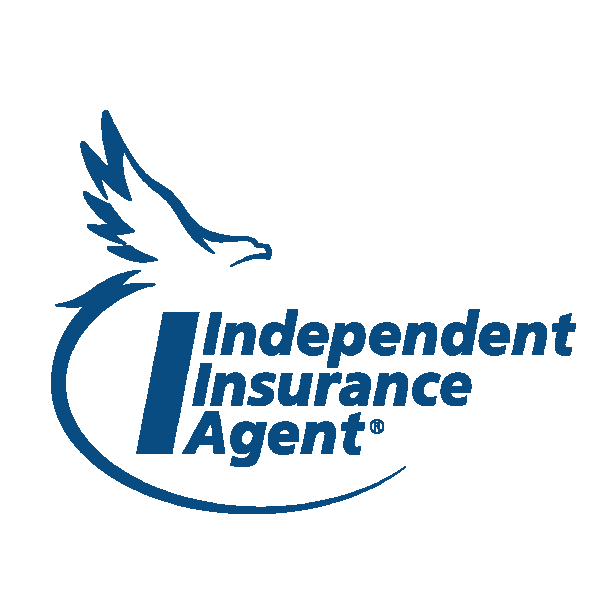Why Are Commercial Property Insurance Rates Increasing Each Year in New Mexico?
CHECK OUR PRICESIn recent years, businesses across New Mexico have experienced a significant rise in commercial property insurance rates. This trend has raised eyebrows among business owners, prompting many to question the underlying factors driving these increases. Understanding the reasons behind these rising costs is crucial for business owners to make informed decisions regarding their insurance policies and financial planning. In this article, we will explore the various factors contributing to the increase in commercial property insurance rates in New Mexico.
The Impact of Natural Disasters
Frequency and Severity of Wildfires
New Mexico is no stranger to wildfires, which have become more frequent and severe over the years. The state’s dry climate, coupled with increasing temperatures, creates an ideal environment for wildfires to thrive. As a result, insurance companies are facing higher claims related to property damage caused by these disasters. This increase in claims leads to higher premiums for policyholders, as insurers must adjust their rates to cover the rising costs associated with these natural disasters.
Moreover, the aftermath of a wildfire can be devastating for businesses, leading to not only property damage but also loss of income during the recovery period. Insurers are keenly aware of these risks, and as they assess the potential for future claims, they often raise rates to mitigate their financial exposure. Business owners must consider these factors when evaluating their insurance options and budgeting for the future. The psychological toll on communities affected by wildfires cannot be understated; residents often face displacement, emotional distress, and a long road to recovery. Local economies can suffer as businesses close or reduce operations, leading to job losses and a decrease in community resources.
Flood Risks and Climate Change
In addition to wildfires, flooding has become a growing concern in New Mexico. Climate change is contributing to more intense storms and unpredictable weather patterns, increasing the risk of flooding in areas previously considered safe. As flood risks rise, insurance companies are compelled to adjust their rates accordingly.
Many commercial property insurance policies do not automatically cover flood damage, necessitating additional coverage that can significantly increase costs. Business owners must be proactive in understanding their coverage options and assessing their risk exposure to ensure they are adequately protected against potential flooding incidents. Furthermore, the implications of rising flood risks extend beyond immediate property damage; they can disrupt supply chains, impact local infrastructure, and strain emergency services. Communities may need to invest in better drainage systems and flood defenses, which can lead to increased taxes or fees for residents and businesses alike. As the frequency of extreme weather events continues to rise, the need for comprehensive risk management strategies becomes ever more critical.
Economic Factors at Play
Inflation and Rising Construction Costs
The broader economic landscape also plays a significant role in the rising costs of commercial property insurance. Inflation has been a persistent issue, affecting various sectors, including construction and materials. As the cost of building materials and labor continues to rise, so too does the value of commercial properties. Insurers must account for these increased values when determining premiums, leading to higher rates for policyholders.
Furthermore, in the event of a claim, the costs associated with rebuilding or repairing damaged properties can be substantial. Insurers need to ensure they have sufficient funds to cover these expenses, which often results in higher premiums for business owners. Understanding these economic factors is essential for business owners to navigate the complexities of commercial property insurance effectively. The construction industry has also been impacted by supply chain disruptions, which have further exacerbated material shortages and inflated prices. For instance, lumber prices have fluctuated dramatically over the past few years, affecting everything from new builds to renovations. This volatility not only impacts the immediate costs of construction but also creates a ripple effect in the insurance market, as insurers must adjust their risk models to account for these unpredictable expenses.
Market Competition and Underwriting Practices
The commercial property insurance market is influenced by competition among insurers, which can sometimes lead to lower rates. However, in recent years, many insurers have adopted stricter underwriting practices in response to increased risks. This shift has resulted in higher premiums for businesses, particularly those in high-risk areas.
Insurers are now more cautious in their assessments, often requiring more detailed information about a business's operations, safety measures, and risk management practices. As a result, businesses that may have previously qualified for lower rates may find themselves facing higher premiums due to these stringent underwriting criteria. Additionally, the rise of technology in risk assessment has introduced new tools and methodologies that insurers use to evaluate potential clients. Data analytics, for example, allows insurers to better understand risk profiles and trends, but it can also mean that businesses must provide more comprehensive data to secure favorable terms. This evolving landscape necessitates that business owners stay informed about their own risk management strategies and consider proactive measures to mitigate potential risks, such as investing in safety training or upgrading facilities to meet higher standards. By doing so, they may improve their chances of obtaining more competitive insurance rates in a tightening market.
Regulatory Changes and Legal Environment
Changes in State Regulations
Regulatory changes at the state level can also impact commercial property insurance rates. New Mexico has seen various legislative efforts aimed at addressing insurance issues, including reforms related to claims handling and consumer protections. While these changes may benefit policyholders in some respects, they can also lead to increased costs for insurers.
Insurers may need to adjust their pricing models to account for potential changes in liability or claims processes, which can ultimately result in higher premiums for business owners. Staying informed about regulatory developments is crucial for businesses to anticipate how these changes may affect their insurance costs. Additionally, businesses should consider engaging with local industry groups or associations that can provide insights and updates on legislative changes, as well as advocate for policies that support fair insurance practices. By being proactive, companies can better navigate the complexities of the regulatory landscape and potentially mitigate the impact of rising insurance costs.
Litigation Trends and Liability Risks
The legal environment surrounding commercial property insurance is another factor influencing rates. An increase in litigation related to insurance claims can drive up costs for insurers, as they face legal fees and potential settlements. As a result, insurers often pass these costs onto policyholders in the form of higher premiums.
Moreover, businesses that operate in industries with higher liability risks may find themselves facing steeper insurance rates. Insurers assess the likelihood of claims based on the nature of a business's operations, and those deemed high-risk may experience significant increases in their premiums. Understanding the legal landscape and its implications for insurance is vital for business owners seeking to manage their costs effectively. Furthermore, adopting risk management strategies, such as implementing safety protocols and training programs, can help mitigate potential liabilities. By demonstrating a commitment to reducing risks, businesses may be able to negotiate more favorable insurance terms and premiums, ultimately enhancing their financial stability in a challenging legal environment.
The Role of Risk Management
Importance of Risk Assessment
Effective risk management is crucial for businesses looking to mitigate rising insurance costs. Insurers often reward businesses that demonstrate proactive risk management practices with lower premiums. By conducting thorough risk assessments, businesses can identify potential vulnerabilities and implement measures to reduce their exposure to loss.
For instance, investing in safety training for employees, enhancing security measures, and maintaining properties can significantly decrease the likelihood of claims. As businesses take steps to minimize risks, they may find themselves in a better position to negotiate lower premiums with their insurers.
Moreover, risk assessments can also uncover hidden risks that may not be immediately apparent. For example, a company might discover that certain operational practices expose them to legal liabilities or that outdated equipment poses a safety hazard. By addressing these issues proactively, businesses not only protect their assets but also foster a culture of safety and responsibility within their organization. This comprehensive approach to risk management can lead to increased employee morale and productivity, as staff members feel safer and more valued in their work environment.
Implementing Loss Prevention Strategies
In addition to risk assessments, implementing loss prevention strategies can further help businesses control their insurance costs. This may include regular maintenance of properties, installing fire suppression systems, and conducting emergency preparedness drills. By demonstrating a commitment to preventing losses, businesses can build a positive relationship with their insurers, potentially leading to more favorable rates.
Furthermore, insurers often provide resources and support for businesses looking to enhance their risk management practices. Taking advantage of these resources can not only improve safety but also contribute to lower insurance premiums in the long run. Many insurance companies offer training programs, risk management consultations, and even discounts for businesses that implement specific safety protocols. By leveraging these offerings, companies can stay ahead of potential risks while also fostering a proactive approach to safety and compliance. Additionally, engaging employees in these initiatives can create a shared sense of responsibility, encouraging everyone to contribute to a safer workplace and ultimately enhancing the overall resilience of the organization.
Conclusion: Navigating the Changing Landscape
As commercial property insurance rates continue to rise in New Mexico, it is essential for business owners to stay informed about the factors driving these increases. From natural disasters and economic influences to regulatory changes and risk management practices, various elements contribute to the evolving insurance landscape.
By understanding these dynamics, business owners can make informed decisions regarding their insurance coverage and implement strategies to mitigate rising costs. Proactive risk management, staying abreast of industry trends, and fostering strong relationships with insurers can all play a vital role in navigating the challenges posed by increasing commercial property insurance rates.
Ultimately, while the landscape may be shifting, businesses that take a proactive approach to their insurance needs can position themselves for success in an ever-changing environment. The key lies in understanding the factors at play and adapting to ensure adequate protection while managing costs effectively.
Want help insuring your business?
Speak with a licensed agent today to discuss your options for the best insurance for your business.
Prefer to speak with an agent now?
Call: 505-933-6511
Ask an agent now!
Dax Kastrin
Owner of Elemental Risk Management
For over a decade, ERM founder Dax Kastrin has had a passion for providing excellence in the commercial insurance industry.






